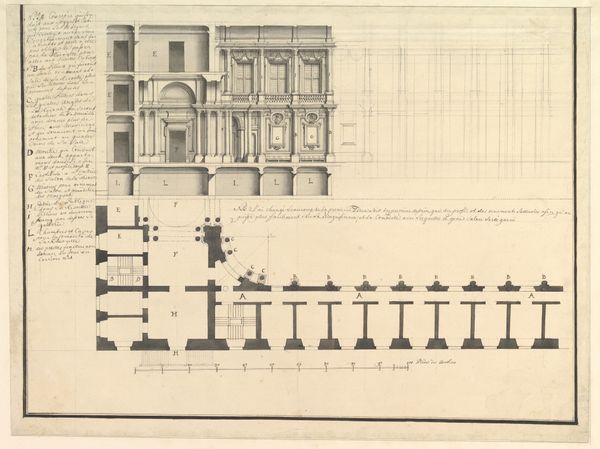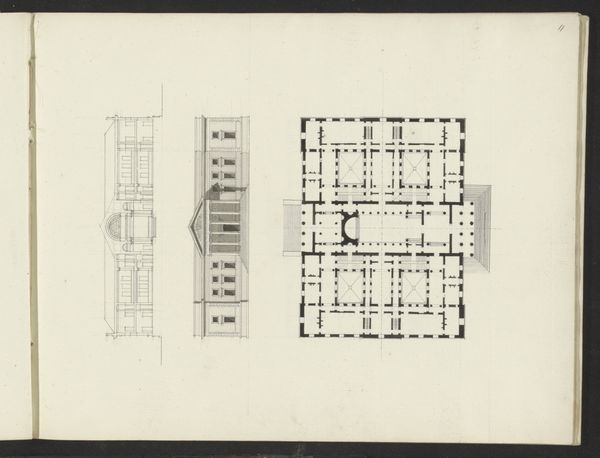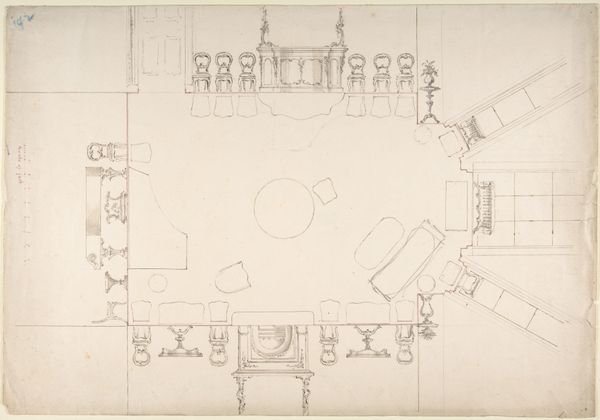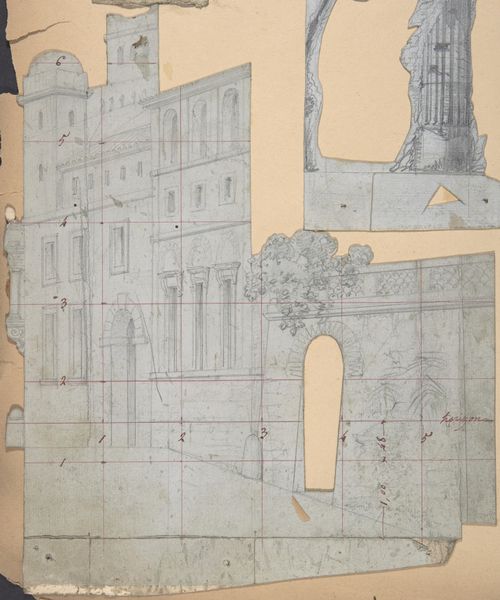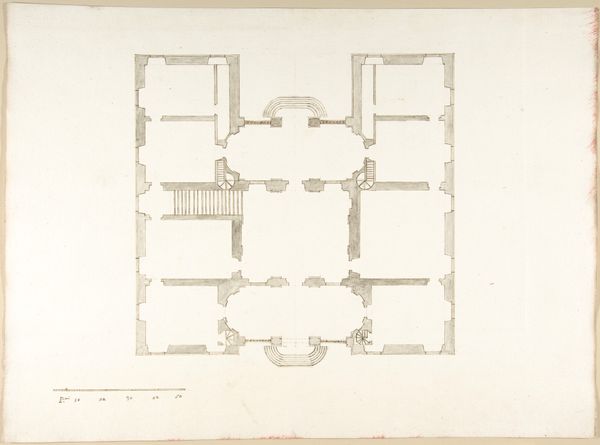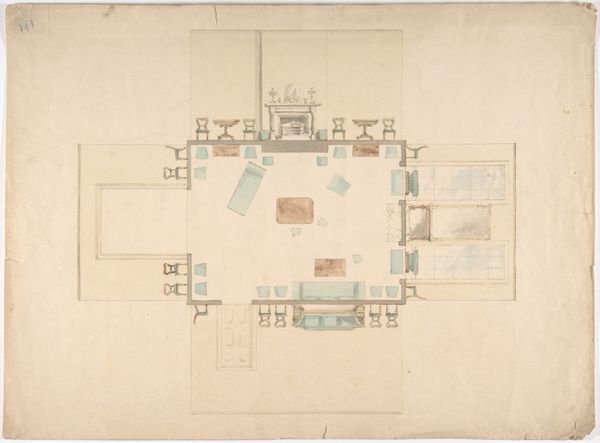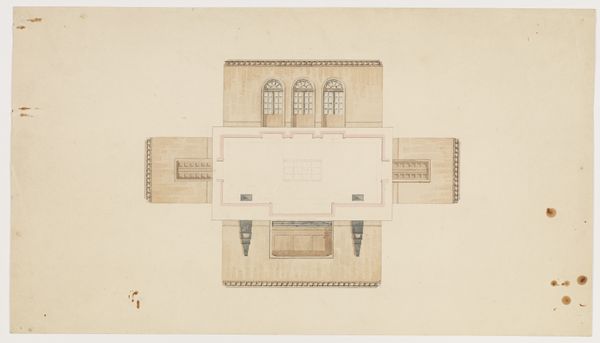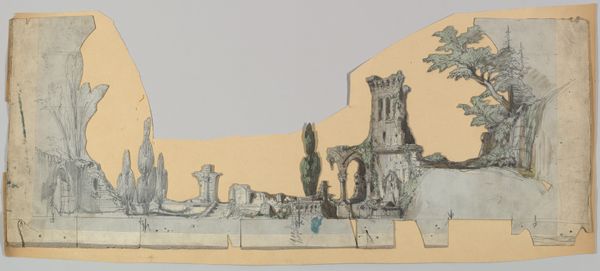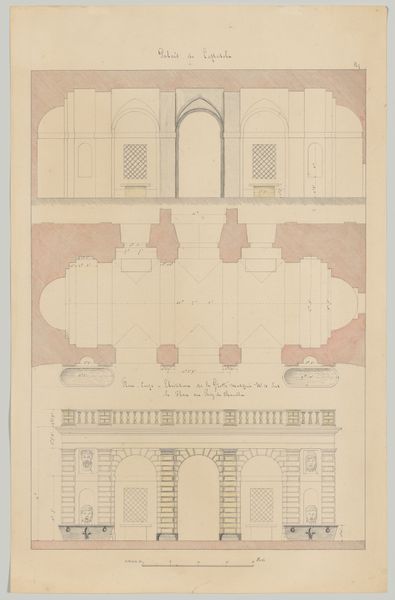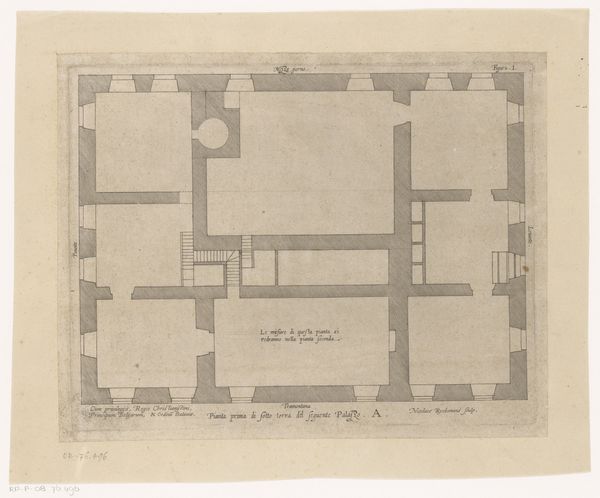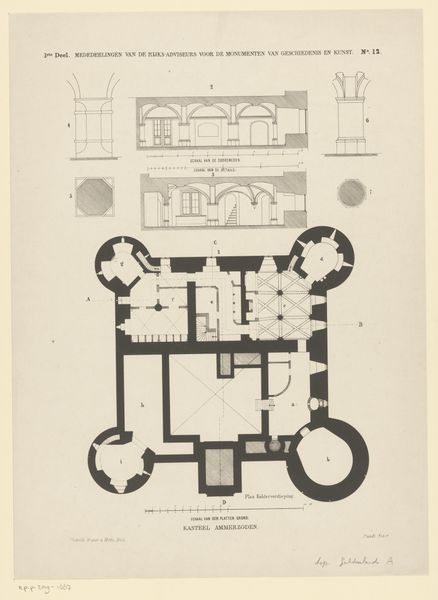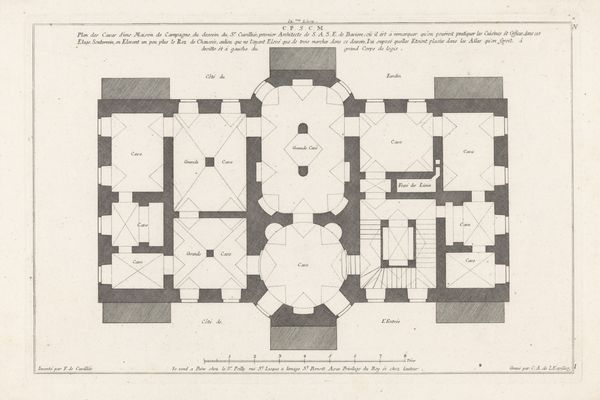
drawing, print, paper, ink, architecture
#
drawing
# print
#
paper
#
ink
#
geometric
#
cityscape
#
islamic-art
#
architecture
Dimensions: Sheet: 22 3/8 × 15 5/8 in. (56.9 × 39.7 cm)
Copyright: Public Domain
Curator: The starkness is what gets me. A really austere beauty. Editor: That's interesting. Well, what we're looking at is "60. Porte Kennesrêne, à Alep," created by Joseph-Philibert Girault de Prangey in 1843. It's a print, using ink on paper, and part of the Metropolitan Museum of Art's collection. Curator: So, a nineteenth-century print depicting Islamic architecture... Let's think about the paper itself. Where was it sourced? How does its production tie into global trade routes of the time? And the ink – what pigments were used, and how does that choice impact the tonality of the image? Editor: You’re right to bring up global trade, as this piece exists within the historical context of Western European orientalism. How does an image like this, carefully constructed through drawing and printmaking, participate in the broader colonial project by visually capturing and cataloging architecture from Islamic lands? Curator: It's clearly architectural documentation, but elevated. Note the strategic use of hatching and cross-hatching to depict volume and texture. It's not just recording; it's interpreting the material reality of the stone and its degradation over time. Editor: Absolutely. Think about who this print was made for. Was it intended for other architects and scholars, for a general public eager to consume romanticized views of distant lands, or for the artist’s private study? Curator: Maybe all of the above. The layering of visual elements – from elevations to floor plans and perspective sketches – hints at a multifaceted intention. The technical skill required to produce this print would have been substantial. What can the precise rendering of architectural elements tell us about the printmaking workshops, and the skilled artisans that contributed to their making? Editor: Right, how were the printmaking trades organized at the time? But, beyond that, the gate itself tells a story. A story of civic identity, trade, defense… Aleppo has been a crossroads for millennia, and the Kennesrine Gate represents its resilience and layered history. Curator: The convergence of meticulous craftsmanship, and its intersection with trade practices speaks to both an artistic product and a functional good. It invites us to look closer, question what labor went into making the work, and to analyze its role in cultural representation and economic production. Editor: This artwork prompts us to think about not only its aesthetic and formal qualities, but also its role in documenting architectural traditions, and engaging with the politics of representation. Curator: It reminds me that art is never created in isolation, but is a testament to our collective effort to shape, consume and understand our physical world. Editor: Yes, it highlights art's inherent social and political dimensions. A single image encapsulating a convergence of historical forces.
Comments
No comments
Be the first to comment and join the conversation on the ultimate creative platform.
